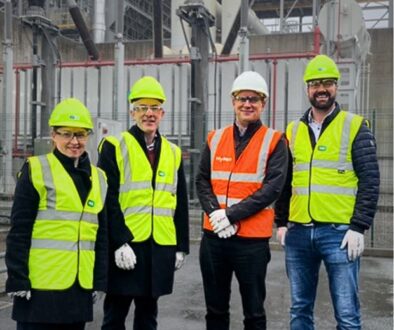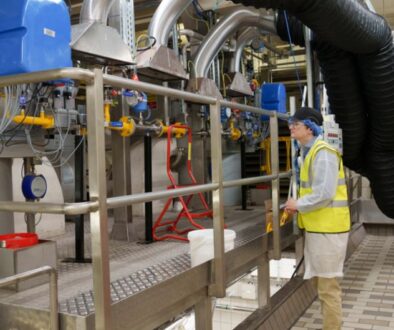Podcast: The Time is Now? Green Hydrogen
Author: Clare Nasir, Chaseman Global | LinkedIn
A critical mass of government pledges and promises, international events, technological leaps and shrewd business strategies have propelled Green Hydrogen in just three years from a lowly pie in the sky energy alternative to a clean fuel source with much potential.
So how has the landscape changed so dramatically for this emerging sector?
1. UK’s Hydrogen Commitment
Just two years ago the UK Hydrogen Strategy outlined a comprehensive roadmap to develop a thriving UK hydrogen economy over the coming decade, placing hydrogen as part of the country’s ambitious net zero commitment.
This step change has injected a high octane boost into what was sluggish progress of the hydrogen market through the past ten years or so. Prices are now dropping as green hydrogen becomes cost competitive with blue and grey alternatives. Production costs are expected to fall 50 to 60% by 2030.
Since the strategy announcement, extra funding to support hydrogen technologies has reinforced the government’s belief that hydrogen is “set to become a super fuel of the future.”
In April 2022 the Net Zero Hydrogen Fund (NZHF) was launched. Worth £240 million it supports multiple low carbon hydrogen production technologies.
Even more recently the British Energy Security Strategy doubled the UK’s hydrogen production ambition to 10GW by 2030, stipulating that 50% must come from green hydrogen.
This signals strong confidence in the green hydrogen market.
Like past energy transitions, notably coal to gas, creating an infrastructure takes time, support and investment. However time is ticking, serious emission cuts are needed and deadlines loom, one reason why the hybrid mix of blue and green hydrogen will be necessary to meet 2030 10GW.
2. UK Hydrogen Network
There are many hydrogen projects in development across the UK, including a number in the Northwest of England. This part of the country has long produced world-class industrial innovators and leaders from the earliest days of the Industrial Revolution. Its deep-rooted within the fabric of society and is an example of a region where the UK’s hydrogen network is gaining significant structure and strength.
The first UK Hydrogen Week from 13th to 19th February 2023. A brilliant opportunity to unite the many stakeholders from industry, government and academia to promote the role of hydrogen in reaching net zero.
The Northwest Hydrogen Alliance championed this inaugural week. They are the largest membership body dedicated to hydrogen in the UK where the local economy continues to be driven by energy-intensive industries. The relevant skill set exists within the Northwest, amongst a pool of early adopters (existing industries) who require a route to reduce their carbon heavy emissions.
Trafford Green Hydrogen is an industry leading project that will use renewable energy to produce green hydrogen fuel…
The Trafford Low Carbon Energy Park development, in Greater Manchester, consists of multiple renewable and low-carbon projects, which aims to accelerate the Northwest’s route to net zero.
A green hydrogen production facility is located here. Led by Carlton Power, the first phase of Trafford Green Hydrogen will produce 15 to 20MW.
This project is Manchester’s first hydrogen hub — and the largest consented green hydrogen scheme in the country. It is expected to be a catalyst for more low carbon generation whilst increasing energy security in the northwest, boosting investment in new energy infrastructure and creating jobs in the area.
Carlton Power are also developing a second green hydrogen project in the North West of England — at Barrow-in-Furness, and are working with Kimberly-Clark to bring the scheme forward. A third consented initiative is near Plymouth in the southwest. All three projects (their first phase of green hydrogen schemes in the UK) are earmarked for commercial operation in 2025.
3. Better Together
The latest Cultivating Conversations podcast features Carlton Power’s, Green Hydrogen Projects Director, Eric Adams. He discusses the need for a collaborative approach in developing these energy projects; a pathway where working with local consortium yields effective and long lasting results.
Eric stresses the importance of support from, amongst many, the Greater Manchester Combined Authority (GMCA).
Mayor of Manchester, Andy Burnham, is driving the green agenda. He contributed to the our conversation,
“From our Local Area Energy Plans, we know that hydrogen will have an important role to play in helping us to achieve carbon neutrality by 2038, particularly in supporting businesses and transport to decarbonise. GMCA’s Memorandum of Understanding with Carlton Power has helped to support the Hydrogen Electrolyser at Trafford Energy Park which, at up to 200MW, has the potential to be the UKs largest Green Hydrogen production facility.”
4. Early Groundwork
Eric comments on the challenges of balancing distribution, storage and demand, emphasising the importance of the early adopters market.
He adds that is not just about targeting the heavy industrial clusters where the scale and the investment are significant. He is clear that green hydrogen needs to be delivered to more remote businesses, not as heavily industrialised yet still underpin the economy.
Carlton Power plans to roll out this smaller-scale approach in the form of hydrogen hubs that eventually will link up. Thus working in parallel with the larger blue hydrogen schemes such as HyNet and East Coast Hydrogen which are looking to develop larger transmission networks.
It is evident that the green hydrogen market is gaining traction everywhere. Coalitions are facilitating the networks and growth, and beyond the UK similar mobilisations are happening.
5. From Every Corner
International industry news is full of green hydrogen advances.
The week of writing (Feb 2023) a team of scientists from the University of Adelaide successfully split natural seawater without pre-treatment to produce green hydrogen, with plans now to develop commercially. Like many other areas of cleantech, technological challenges are being overcome with sustainable solutions.
Also in APAC, the world’s largest hydrogen power plant and electrolyser were announced in South Australia during February.
Similar headlines landed in Canada, with approval given to EverWind for North America’s first green hydrogen facility.
Whilst in India approval of a $2.4bn subsidy package to turn its companies into leading green hydrogen producers, consumers and exporters of the gas is underway.
Yes, uncertainty remains a thread amongst many, although other forecasts suggest green hydrogen is already on a S-Curve trajectory.
6. Strong Spectrum of Leadership
What we are seeing is the vision being realised by key players, such as the team at Carlton Power, who even before the latest government subsidies and pledges, were petitioning for the planning of green hydrogen projects.
The swift and thorough transition to a net-zero economy presents challenges on an unprecedented scale. This is not a business as usual outcome; a transformative, multidisciplinary approach is necessary. Experienced, driven and collaborative leadership is required within the energy sector to make this transition happen, and green hydrogen needs to play its part by providing a robust, reliable and clean supply chain – within the next seven years.
Adam Small is Head of CleanTech, Chaseman Global,
“I commend the planning and strategy of the Trafford Low Carbon Energy Park. It is clear the depth and breadth of Carlton Powers experience and partnerships are instrumental in executing the green hydrogen project. Transformational leadership is central to building the UK’s decarbonised energy market. Placing the best in class in key roles adds greater resilience and ultimately success to critical sustainable initiatives.”
View full article here.
List to the full podcast here: Youtube / Spotify
Listen to Cultivating Conversations.


